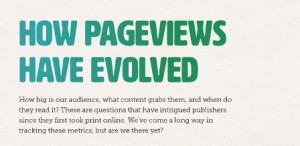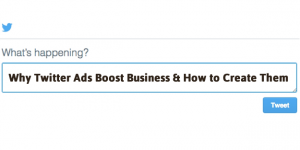It’s no secret that digital disruptions are changing the way we live and work. What isn’t so clear is how digital disruption will start to affect small boutiques as online sales steadily increase. Does the small boutique stand a chance against larger competitors?
Understanding Digital Disruption
When a new technology fundamentally changes the nature of real world interactions, a ripple effect follows. The changes typically begin in large urban environments with big businesses and tech-savvy early-adopters. Over time, however, very few escape the relentless push towards the newer, better, easier way of doing something.
Notable examples of digital disruption in sales:
- The rise of ecommerce – Giants such as Amazon and eBay notably changed how people looked at making purchases online. While some hesitation slowed early progress, most consumers in 2016 do not think twice before making a one-click purchase over the internet.
- Technology in the marketplace – Some small businesses still hold on to the cash registers of yesteryear, but digital disruptions have also changed the nature of payments. Most companies accept all major credit cards and use digital systems to manage daily transactions. Adoption rates for 100% digital payments via a smartphone or other device are slowly climbing. Forecasts suggest 210% growth for mobile payments in 2016.
These changes reside on a continuum. The nature of ecommerce and payment in the marketplace continues to change, and ultimately, those changes will reach the smallest outliers in every market.
The “It Can’t Happen Here” Mentality
Sinclair Lewis’s 1935 political novel, It Can’t Happen Here, addressed a very different subject matter, but the psychological implications hold true for digital disruptions. For small businesses to survive in the coming years, they can’t lull themselves into a state of disbelief. Digital progress will happen where you conduct business at some point. You may think mobile payments are unsafe and non-threatening right now, for instance, but every new advancement has the potential to fundamentally shift your business practices.
The downfall of Blockbuster Video stores, a clear digital disruption warning, fell to digital streaming and solutions such as Redbox. Some small grocery stores fail because they can’t maintain competitive pricing with large retailers such as Wal-Mart and because consumers started purchasing essentials online. Every small business needs to think about positioning itself in a changing future to stay in business.
Lifting the Veil – Embracing Digitalization as a Small Business
To compete in a constantly disrupted environment such as sales, small businesses must constantly think about digital transformation. Digital transformations refer to both industry responses to disruptions as well as pursuing innovative ideas that lead to digital disruptions.
Companies that execute well calculated transformations add value to their customers’ experiences and add value to the company in everyday business operations. You will not find a one-size-fits-all road map to digitization. Every company must look at its own business model and find the technological solutions to improve success.
Consider these tips for transformation to improve your own digital capabilities:
- Mobile is ESSENTIAL – If you don’t have a mobile strategy, you will miss out on custom acquisitions. A strong community reputation is important, but it may not carry your brand message to everyone in your target market. To bring in new customers, your brand needs mobile visibility. Grab the attention of people who have just moved into town and those visiting with a responsive mobile website, mobile deals, and updated mobile maps listings.
- Training – Digital skillsets represent one of the primary challenges all businesses face in a highly digitalized world. To leverage digital solutions in your business, understand what technology can do for you. YouTube is a great place to start learning about digital possibilities, but you may also want to attend industry networking events that feature technology vendors.Soak in as much as you can about where larger companies are headed so you can invest in competitive technologies. Encourage your team to take short courses focusing on digital mastery, and hire individuals who enjoy working with and learning about new technology. Your people are the greatest asset you can invest in when you go digital.
- Focus on transparency – Successful digital businesses don’t adopt technology because they think it looks neat or because they want to keep up with the Joneses. Instead, they start breaking down barriers to success. Interdepartmental communications and building relationships with your target market will clue you into the next best thing. Listen to what your consumers and employees want to see in the workplace and start optimizing processes one step at a time.
- Get unified – In retail stores, in particular, bridging the gaps between processes will help you achieve two goals – streamlining workflows and improving the customer journey. Look into solutions that connect point of sale devices with customer relationship tools. As a small business, you have a greater opportunity for offering highly personalized services that larger brands can rarely execute successfully. Take advantage of your unique customer relationship with the right supporting tools.
- Transform your content, too –The way you interact with consumers when they aren’t in your store can enhance or hurt brand loyalty. Change your content strategy to keep up with the current trends in online communications. Select digital channels based on target market information and craft content that fits within that channel. Digitalized business means anticipating an audience’s online activities and publishing content when and where consumers want to see it.
- Do what makes sense for your business – Going digital doesn’t mean forsaking your brand or your mission as a business. Digitalization looks different for every company. Experiment with the solutions that make sense for your market, growth goals, and brand personality.

free for use with no attribution
Your company has two choices today – choose to wait until technology forces you to change or embrace change as a new way of doing business. As a small business, you have more time to make the changes necessary to hold onto your competitive edge. In the next 10 years, technology will have deeper roots than ever before.
Companies of all sizes and across all industries face the same risk of obsolescence. As with most lifestyle changes, awareness and education are the first steps towards meaningful change. Focus on making small changes every year that will give your company a competitive edge in a global, digital economy.
Business & Finance Articles on Business 2 Community(85)








